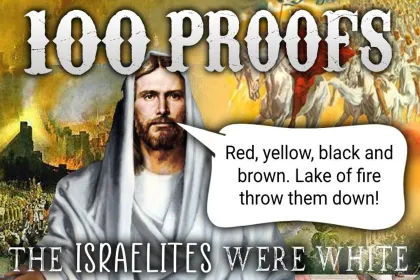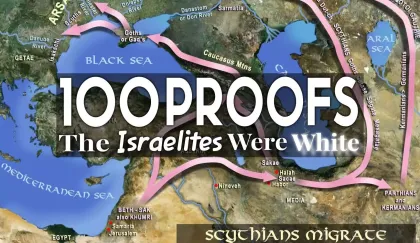TruthVid's 100 Proofs that the Israelites were White, Part 16: 42, Major word mistranslations or misunderstandings that occur repeatedly throughout the Bible: Nations or Gentiles?, Physical or Spiritual Seed?, Fornication and Adultery

TruthVid's 100 Proofs that the Israelites were White, Part 16
Here we begin our discussion of point 42 of TruthVid’s 100 Proofs, which concerns the mistranslations or misinterpretations of words found in Scripture, whether they are purposeful or not. William Finck’s prepared notes are found below.
42) Major word mistranslations or misunderstandings that occur repeatedly throughout the Bible.
These mistranslations are systemic in that they are based on a universalist interpretation of Scripture.
Nations or Gentiles?
The Hebrew word goy means nation. The Brown-Driver-Briggs Hebrew lexicon defines it as “1) nation, people 1a) nation, people 1a1) usually of non-Hebrew people 1a2) of descendants of Abraham 1a3) of Israel 1b) of swarm of locusts, other animals (fig.) n pr m 1c) Goyim? = ‘nations’”
So gentile is not even part of their definition for goy, but it is translated in that manner 30 times in the King James Old Testament, half of them in Isaiah.
The Greek word ἔθνος means nation. It is translated 96 times as gentile in the King James Version. On another 5 occasions the word Ἕλλην, which means Greek, is translated as gentile, which is completely dishonest. According to Liddell & Scott, ἔθνος in earliest Greek writing meant a “number of people living together, company, body of men… band of comrades… host of men… of particular tribes… of animals… swarms, flocks…” Then later, “after Homer, nation, people… later, foreign, barbarous nations, opposite to Ἕλληνες… at Athens, athletic clubs of non-Athenians in LXX, non-Jews, Ps. 2.1, al., cf. Act.Ap.7.45; Gentiles… used of Gentile Christians, Ep. Rom.15.27.” Other, more obscure uses of the word are given after these.

 This evening we had another open forum discussion with some of our Forum Members and friends. Many topics of immediate interest to Identity Christians were discussed, and especially the methods of our approach to Scripture and why we hold them dear.
This evening we had another open forum discussion with some of our Forum Members and friends. Many topics of immediate interest to Identity Christians were discussed, and especially the methods of our approach to Scripture and why we hold them dear.










 Please click here for our mailing list sign-up page.
Please click here for our mailing list sign-up page.








Recent comments